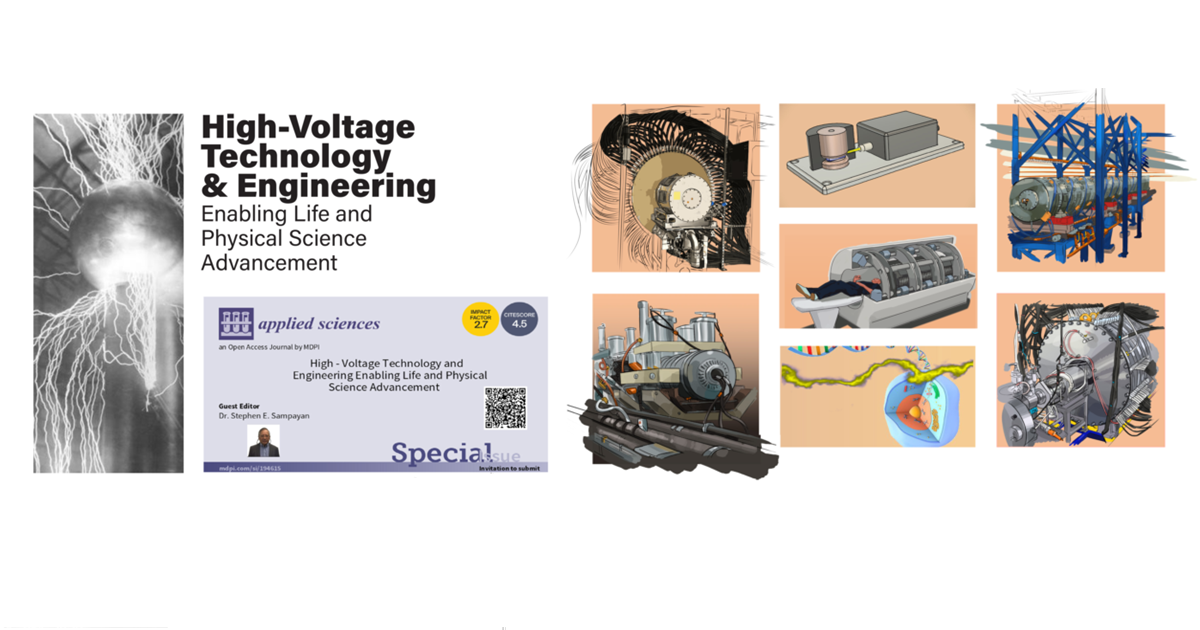High-Voltage Technology and Engineering Enabling Life and Physical Science Advancement
A special issue of Applied Sciences (ISSN 2076-3417). This special issue belongs to the section "Applied Physics General".
Deadline for manuscript submissions: closed (31 July 2025) | Viewed by 6749

Special Issue Editor
Special Issue Information
Dear Colleagues,
High-voltage technology and engineering play a fundamental role in the advancement of the life and physical sciences. In 1895, Wilhelm Röntgen generated laboratory X-rays using a high-voltage induction coil. Now, X-rays play a fundamental role in healthcare as both a diagnostic tool and in cancer therapies. Robert J. Van de Graaf and later John Cockroft and Ernest Walton built the first charged particle accelerators in the late 1920s and 1930s, respectively; their unique techniques were the foundation for generating mega-volt potentials. These innovations advanced our collective understanding of the atom. In just a century, high-voltage technology has come to serve as a basis for sterilization and controlling the uptake of drugs, managing pollutants, producing and transmitting energy efficiently, and for continuing research.
For this Special Issue, we invite submissions exploring cutting-edge research and recent advances in the field of high-voltage technology and engineering, with an emphasis on scientific and commercial applications. Both theoretical and experimental studies are welcome, as well as comprehensive reviews and survey papers. Specific papers will be selected and highlighted as “invited” and will serve as the foundation for this Special Issue.
Dr. Stephen E. Sampayan
Guest Editor
Manuscript Submission Information
Manuscripts should be submitted online at www.mdpi.com by registering and logging in to this website. Once you are registered, click here to go to the submission form. Manuscripts can be submitted until the deadline. All submissions that pass pre-check are peer-reviewed. Accepted papers will be published continuously in the journal (as soon as accepted) and will be listed together on the special issue website. Research articles, review articles as well as short communications are invited. For planned papers, a title and short abstract (about 100 words) can be sent to the Editorial Office for announcement on this website.
Submitted manuscripts should not have been published previously, nor be under consideration for publication elsewhere (except conference proceedings papers). All manuscripts are thoroughly refereed through a single-blind peer-review process. A guide for authors and other relevant information for submission of manuscripts is available on the Instructions for Authors page. Applied Sciences is an international peer-reviewed open access semimonthly journal published by MDPI.
Please visit the Instructions for Authors page before submitting a manuscript. The Article Processing Charge (APC) for publication in this open access journal is 2400 CHF (Swiss Francs). Submitted papers should be well formatted and use good English. Authors may use MDPI's English editing service prior to publication or during author revisions.
Keywords
- high voltage
- particle accelerator
- pulsed power
- fusion
- electroporation
Benefits of Publishing in a Special Issue
- Ease of navigation: Grouping papers by topic helps scholars navigate broad scope journals more efficiently.
- Greater discoverability: Special Issues support the reach and impact of scientific research. Articles in Special Issues are more discoverable and cited more frequently.
- Expansion of research network: Special Issues facilitate connections among authors, fostering scientific collaborations.
- External promotion: Articles in Special Issues are often promoted through the journal's social media, increasing their visibility.
- Reprint: MDPI Books provides the opportunity to republish successful Special Issues in book format, both online and in print.
Further information on MDPI's Special Issue policies can be found here.





